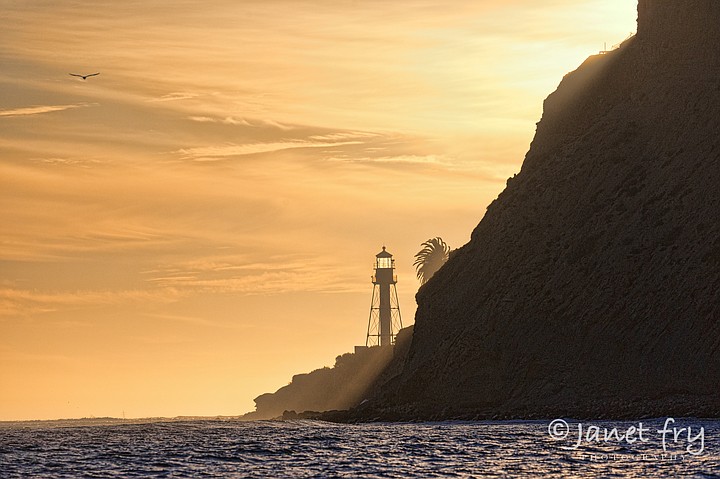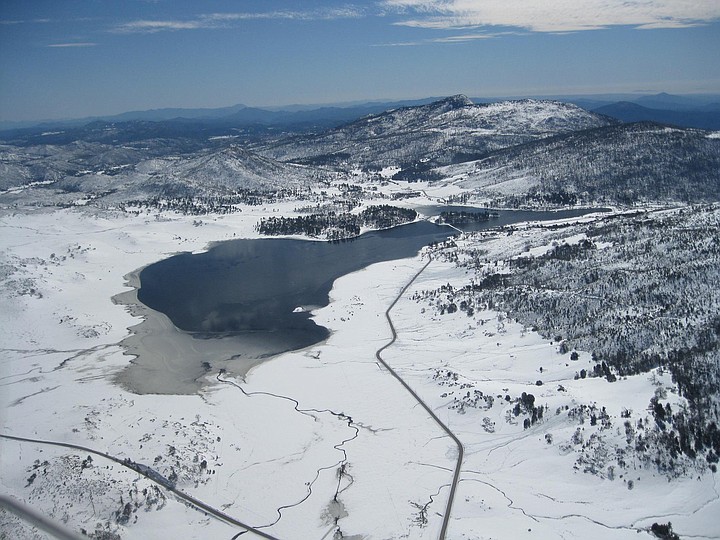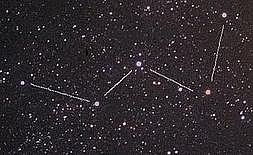 Facebook
Facebook
 X
X
 Instagram
Instagram
 TikTok
TikTok
 Youtube
Youtube

Earliest Sunset (4:43 p.m. from San Diego) occurs Saturday, December 6, a date that is not coincident with the shortest day (winter solstice — December 21) because of factors relating to the non-circular shape of the Earth’s orbit around the sun and the tilt of Earth’s axis. Early December is a good time to view the setting sun from the spectacular vantage point of Cabrillo National Monument at the tip of Point Loma. During most of the year, you can’t do that since sunset occurs well after the park’s closing time of 5:15 p.m.

Cross-Country Skiers are in for a short-lived treat this month through February if winter storms intense enough to drop several inches to two feet of snow hit San Diego County’s higher mountains. As the clouds are clearing, you may be able to take advantage of good skiing conditions along Highway 79 through Cuyamaca Rancho State Park and along Sunrise Highway through the Laguna Mountain Recreation Area. More limited opportunities for cross-country skiing may briefly exist on Palomar Mountain. Farther north in Southern California and higher in elevation, the forested crests of the San Gabriel, San Bernardino, and San Jacinto Mountains offer more dependably decent snow conditions.

Toyon, or “Christmas-berry,” one of the more distinctive shrubs of Southern California’s native chaparral plant community, is now flaunting clusters of red berries. Here in coastal San Diego, toyon can be found wherever large patches of native vegetation survive, but especially in the thick chaparral covering some north-facing slopes. Toyon branches may look inviting to cut as a Christmas wreath — but they're protected from picking by California state law.

The Cassiopeia W stands on end (its fainter end) very high in the northeast as the stars come out on Thursday, December 3. Watch Cas turn around to become a flattened M, higher in the north, by late evening.
The above comes from the Outdoors listings in the Reader compiled by Jerry Schad, author of Afoot & Afield in San Diego County. Schad died in 2011. Planet information from SkyandTelescope.org.


Earliest Sunset (4:43 p.m. from San Diego) occurs Saturday, December 6, a date that is not coincident with the shortest day (winter solstice — December 21) because of factors relating to the non-circular shape of the Earth’s orbit around the sun and the tilt of Earth’s axis. Early December is a good time to view the setting sun from the spectacular vantage point of Cabrillo National Monument at the tip of Point Loma. During most of the year, you can’t do that since sunset occurs well after the park’s closing time of 5:15 p.m.

Cross-Country Skiers are in for a short-lived treat this month through February if winter storms intense enough to drop several inches to two feet of snow hit San Diego County’s higher mountains. As the clouds are clearing, you may be able to take advantage of good skiing conditions along Highway 79 through Cuyamaca Rancho State Park and along Sunrise Highway through the Laguna Mountain Recreation Area. More limited opportunities for cross-country skiing may briefly exist on Palomar Mountain. Farther north in Southern California and higher in elevation, the forested crests of the San Gabriel, San Bernardino, and San Jacinto Mountains offer more dependably decent snow conditions.

Toyon, or “Christmas-berry,” one of the more distinctive shrubs of Southern California’s native chaparral plant community, is now flaunting clusters of red berries. Here in coastal San Diego, toyon can be found wherever large patches of native vegetation survive, but especially in the thick chaparral covering some north-facing slopes. Toyon branches may look inviting to cut as a Christmas wreath — but they're protected from picking by California state law.

The Cassiopeia W stands on end (its fainter end) very high in the northeast as the stars come out on Thursday, December 3. Watch Cas turn around to become a flattened M, higher in the north, by late evening.
The above comes from the Outdoors listings in the Reader compiled by Jerry Schad, author of Afoot & Afield in San Diego County. Schad died in 2011. Planet information from SkyandTelescope.org.
Comments